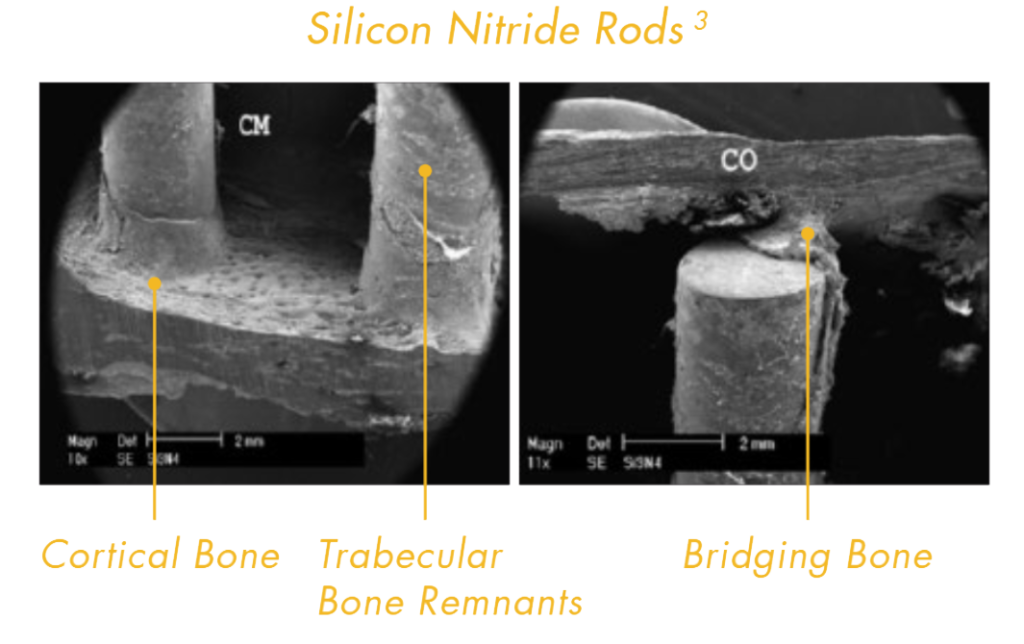JUST THE FACTSIn the race to achieve interbody fusion, material matters. And no material fosters an environment for faster fusion like silicon nitride. Featuring the ability to achieve superior new bone growth and osseointegration, along with proven bacteriostatic properties and enhanced imaging attributes, silicon nitride outperforms PEEK and titanium. |
| | |
ENHANCED OSTEOGENIC RESPONSE
The surface chemistry and natural nanostructure topography of silicon nitride provide an optimal environment for stimulation of osteoprogenitor cells to differentiate into osteoblasts.
GREATER PROTEIN ABSORPTION
Silicon nitride demonstrates significantly greater protein adsorption (bronectin, laminin and vitronectin) in comparison to PEEK and titanium
.²GREATER NEW BONE FORMATION
Silicon nitride implants demonstrate greater new bone formation at 3, 7, 14 and 90 days compared to PEEK and titanium; regenerated bone associated with silicon nitride implants is 2 to 3 times that of PEEK and titanium implants at 3 months after surgery.¹
INCREASED OSSEOINTEGRATION
Silicon nitride implants demonstrate increased osseointe-gration at 3, 7, 14 and 90 days compared to PEEK and titanium; percent of bone at silicon nitride implant interface is 2 to 6 times that of PEEK and titanium implants at 3 months after surgery.¹

DEMONSTRATED BACTERIOSTATIC PROPERTIES
Silicon nitride inhibits bacterial colonization and biofilm formation. Silicon nitride demonstrates significantly lower biofilm formation at 4, 24, 48 and 72 hours as compared to PEEK and titanium; live bacteria (S. epidermidis, S. aureus, P. aeruginosa, E. coli and Enterococcus) associated with silicon nitride implants are 8 to 30 times lower than PEEK and titanium.²
No infection is observed with bacteria-inoculated silicon nitride implants at 3 months, whereas both PEEK and titanium implants maintain a septic state. Silicon nitride demonstrates this property even in the absence of antibiotics.¹
DEMONSTRATED BACTERIOSTATIC AGENT
No infection is observed with bacteria-inoculated silicon nitride implants at 3 months, whereas both PEEK and titanium implants maintain a septic state. Silicon nitride demonstrates this property even in the absence of antibiotics.¹
COMPATIBLE WITH ALL IMAGING MODALITIES
Silicon nitride implants are semi-radiolucent with clearly visible boundaries, and produce no distortion under MRI and no scattering under CT; this enables an exact view of the implant for precise intraoperative placement and postoperative fusion assessment.







